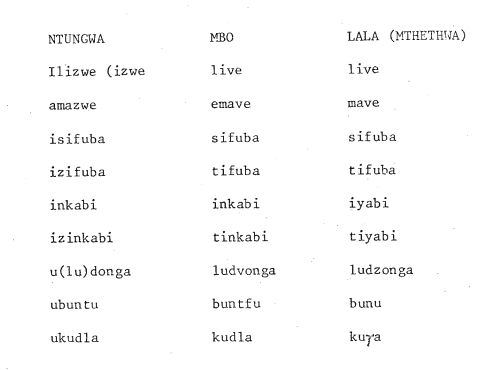I always wondered which of the many Zulu dialects modern Zulu is & always thought it was Hlubi (isiMbo) & according to this thesis by a Mr. Isaac Sibusiso Kubeka written in what was apparently 1979, we see modern Zulu is more the original Ntungwa dialect. The Mthethwa dialect (isiLala) that was likely spoken by King Shaka looks more a Tsonga dialect from a Zulu-speaker's perspective. Despite the "Zulu area" speaking many dialects, I'm of the belief that these dialects were mutually intelligible & similar for the most part. This is the only way these Nguni tribes from southern Mozambique up to Umzimvubu River & inland into the Drakensberg Mountains up to Gauteng could understand each other because I, genuinely, think that it was seldom that an African travelled to a land where he couldn't speak the local language in precolonial times.
Writing Zulu
I remember reading a book written in 1930 by a Mr. P. Lamula who claimed a wild theory that Zulus were from Egypt or something to that affect, I couldn't take it seriously but I noticed his writing. In 1930, Zulu was written very differently than it is today. I think because Zulu was only written in the early 20th century, many versions of spelling & grammar became acceptable. The original version of the Zulu Bible itself is not written in today's language. There is no official body to regulate the spoken & written Zulu language & I think this is why Zulu hasn't been standardised, because even in official newspapers, people often cite errors in grammar or spelling. I like being thorough & using the correct language in any language I speak including English so with Zulu, I often write down every syllable. I am just being deviant because I know it's not written that way but I still continue doing so. "EThekwini" remains "eThekuwini" or "eThek'wini" to me & "uMlazi" is "uMulazi", "ukuhlawuliswa" is "ukuhlawulis'wa". Many Zulu people can probably see what I'm getting at with my spelling because they think it that way but it's not said or written that way. Until there's an established Zulu language regulating body, I think people should be free to write & speak Zulu as they feel. So, for me, a computer or calculator is still "isibali" & network is still "inxumano". Zulu uses the Latin alphabet & has always been written with the Latin alphabet on official documents but there's also this writing system used to write Zulu.
